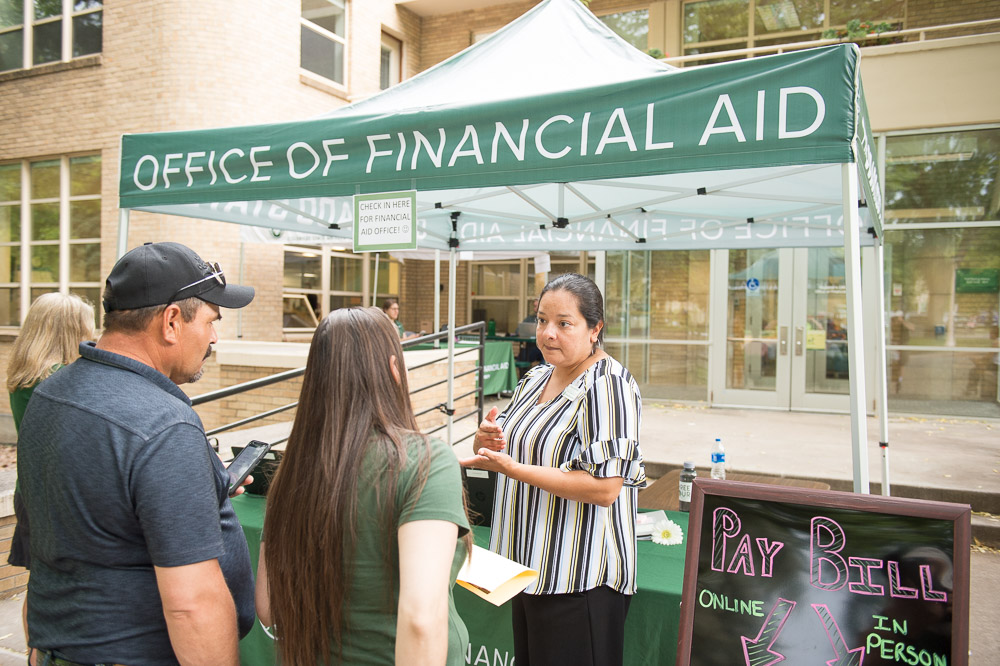
Let’s face it: Going to college is a hefty investment. All evidence points to a healthy return on that investment – research by the Association of Public and Land Grant Colleges shows that, on an annual basis, bachelor’s degree holders earn about $32,000 more than those whose highest degree is a high school diploma – but that still doesn’t lessen most families’ initial sticker shock, even at public institutions like Colorado State University.
In addition to the fact that in-state undergraduate tuition remained steady for this academic year, CSU offers a wide range of resources to make education affordable.
“The Office of Financial Aid is committed to helping students make CSU a reality,” said Director Joe Donlay. “Like the rest of the University, we look at not only providing students access to an education, but also are committed to their success here on campus.”
“Like the rest of the University, we look at not only providing students access to an education, but also are committed to their success here on campus.”
— Joe Donlay, director of Office of Financial Aid
To that end, CSU disbursed about $350 million of financial aid from all sources – federal state, institutional and private funding – to about 75 percent of the student boy in academic year 2018-19. Aid from university sources alone exceeded $72 million.
Determining the amount of aid available, from what sources, is done on a case-by-case basis rather than simply adhering to hard and fast parameters, according to Tom Biedscheid, assistant vice president for enrollment and access.
“We start the process with an equity mindset,” he said. “We look at what the students and their families can pay, and what they need help with. This varies not only by income, but by the student’s level of self-help, such as devoting hours to work-study.” About 1,300 of CSU’s 28,000 enrolled students last year earned money through work-study.
Equity mindset
Biedscheid said this equity mindset has evolved over the past few years, with the goal of getting the right amount of aid to those who need it. Financial Aid works closely with the CSU Access Center, which reaches out to Colorado high school students from underserved populations (first-generation, low-income, ethnically and racially diverse and non-traditionally aged) to support the idea that anyone who wants to go to college can do it. He said Enrollment and Access is part of 82 different partnerships across the state to that end.
“We work with people in the various communities who tell their stories and who can help potential students see that CSU can be a financial possibility,” Biedscheid added. “We know the application process – for admission to CSU and even more so for determining financial aid – is incredibly complex and can be especially confusing for first-generation students whose parents have never gone through it. If we can help families start the process early, they can have good financial information sooner to use in planning to make this important decision.”
Another part of the equity mindset evolution involved looking at the entire student finance experience, from paying tuition and fees to receiving scholarship funds and managing that money wisely. As a result, instead of being spread over a number of offices, all those functions – and more – are under one umbrella, and all 46 staff members have embraced customer service.
One-stop shop
The Office of Financial Aid is now a one-stop shop, with no appointments needed to consult with any of the advisers.
“If it’s about money, it’s us,” Donlay said. “We never want any CSU student to be forced to stop out just because of finances. They just need to come and talk to us about what’s going on.”
Sometimes, the office will reach out to students.
“Our Success Team has developed relationships with offices across campus that interact with students and may notice someone who is struggling,” Biedscheid explained. “We never want anyone on campus to go without the basics – it’s hard to concentrate on an education when you’re worried about having enough to eat or pay your rent. We have resources at CSU and we can connect students with them.”
“We never want anyone on campus to go without the basics.”
— Tom Biedscheid, assistant vice president for enrollment and access
Students living in university residence halls don’t have to worry about paying room and board – that all comes out of the account managed through the financial aid office. While that direct-deposit arrangement ends when they move off campus, the advisers are still available for counseling on how to make sure students don’t run out of money before they run out of month.
“We can help them set up their monthly budget, and provide advice on smart money management,” Donlay said. “We hope by then that students have developed a relationship with our office and they feel comfortable stopping by for advice.”